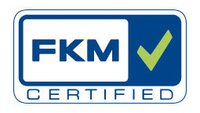Forums & Focus Days: First-hand knowledge
At the analytica Forums & Focus Days, you'll learn about topics such as Digital Transformation, Biotechnology, Occupational Health and Safety, and Financing. The forums feature interesting best practice presentations, discussion rounds, and roundtable discussions for visitors. Gain valuable tips for daily laboratory work.
Lecture
Analysis of Anionic and Cationic Polar Pesticides Using a New Mixed Mode Column.
- at -
- Halle B1 / 131
- Language: English
- Type: Lecture
Lecture description
Analysis of Anionic and Cationic Polar Pesticides Using a New Mixed Mode Column.
Javier Arrebola1, Roberto Romero Gonzalez1, Antonia Garrido1, Marta Vargas1, Richard Jack2, Ramkumar Dhandapani2, Zara Jalali2
1Department of Chemistry and Physics, University of Almeria, Carr. Sacramento, s/n, 04120 La Canada, Almeria, Spain
2Phenomenex, Inc., Torrance, CA
Analysis of polar pesticides presents multiple challenges including adequate retention, separation of critical pairs, and reproducibility. Current HPLC columns available is dedicated to specific mode of analysis, can require long equilibration and hence results in low throughput. In addition, food matrices can add additional challenges due to the presence of complex matrix components including pigments, fats, and sugars that can interfere with the analyte of interest. polar, anionic analytes like Glyphosate will utilize QuEChERS or QuPPE sample preparation techniques, followed by HILIC LC-MS/MS methods for chromatographic retention and separation. Historically, these methods are not user friendly, and lack reproducibility necessary for a commercial laboratory application. In this study, we are presenting a unique HPLC selectivity that provides optimal separation of various anionic pesticides including Glyphosate, Chlorate, Perchlorate, Ethephon, Phosphoric acid-based pesticides, and N-Ac-Glucosamine plus chlorate and perchlorate. In addition, we demonstrate optimal separation and detection of various cationic polar pesticides in both reverse phase and HILIC modes followed by MS detection. Thus both anionic and cationic pesticides can be analyzed in one, reversed phase separation due to the mixed mode capabilities of this unique column. The study demonstrates robust polar pesticide analysis from real sample matrix in addition to providing fast equilibration, optimal retention and peak symmetry for both anionic and cationic pesticides in various food extracts. This column has recently been published in QuPPe-PO v12.2.
Javier Arrebola1, Roberto Romero Gonzalez1, Antonia Garrido1, Marta Vargas1, Richard Jack2, Ramkumar Dhandapani2, Zara Jalali2
1Department of Chemistry and Physics, University of Almeria, Carr. Sacramento, s/n, 04120 La Canada, Almeria, Spain
2Phenomenex, Inc., Torrance, CA
Analysis of polar pesticides presents multiple challenges including adequate retention, separation of critical pairs, and reproducibility. Current HPLC columns available is dedicated to specific mode of analysis, can require long equilibration and hence results in low throughput. In addition, food matrices can add additional challenges due to the presence of complex matrix components including pigments, fats, and sugars that can interfere with the analyte of interest. polar, anionic analytes like Glyphosate will utilize QuEChERS or QuPPE sample preparation techniques, followed by HILIC LC-MS/MS methods for chromatographic retention and separation. Historically, these methods are not user friendly, and lack reproducibility necessary for a commercial laboratory application. In this study, we are presenting a unique HPLC selectivity that provides optimal separation of various anionic pesticides including Glyphosate, Chlorate, Perchlorate, Ethephon, Phosphoric acid-based pesticides, and N-Ac-Glucosamine plus chlorate and perchlorate. In addition, we demonstrate optimal separation and detection of various cationic polar pesticides in both reverse phase and HILIC modes followed by MS detection. Thus both anionic and cationic pesticides can be analyzed in one, reversed phase separation due to the mixed mode capabilities of this unique column. The study demonstrates robust polar pesticide analysis from real sample matrix in addition to providing fast equilibration, optimal retention and peak symmetry for both anionic and cationic pesticides in various food extracts. This column has recently been published in QuPPe-PO v12.2.
Further lectures
- -Analytical testing through the lithium battery supply chain: from raw materials, to manufacturing, to recycling
- Test and Measurement and Quality control
- Sample Preparation
- Laboratory automation / robotics
- Applications
- Laboratory apparatus/Laboratory technology
- Analysis Equipment
- -Analysis of Anionic and Cationic Polar Pesticides Using a New Mixed Mode Column.
- Chromatography and Accessories
- -Die CSR-Direktive: Bürokratiemonster oder Powertool gegen Fachkräftemangel?
- Sustainability in the laboratory
- -Electromembrane extraction (EME) - New technology for green, efficient, and highly selective sample
- Diagnostics in medical research
- Sample Preparation
- Chromatography and Accessories
- Biotechnology/Life Sciences
- Applications
- Sustainability in the laboratory
- Analysis Equipment
- -Advanced cell analysis solutions and automated electrophoresis for sample QC
- Test and Measurement and Quality control
- Chromatography and Accessories
- Biotechnology/Life Sciences
- Analysis Equipment
- -Efficiently implementing and utilizing the right LIMS for your lab
- Laboratory automation / robotics
- LIMS/IT Systems
- Laboratory apparatus/Laboratory technology
- -Advanced techniques for PFAS analysis with LC/MS
- Chromatography and Accessories
- Biotechnology/Life Sciences
- Applications
- Laboratory apparatus/Laboratory technology
- Analysis Equipment
- -Optimising Laboratory Operations and Sustainability with Digital Services. Lessons Learned and Best Practices
- Digital Transformation Lab 4.0
- -Embrace sustainability in your laboratory with Greener by design™ program choices
- Sustainability in the laboratory
- -pH-Messung im Trinkwasser - Einfach mal messen!?
- Test and Measurement and Quality control
- Applications
- Analysis Equipment
#analytica
© Messe München GmbH


